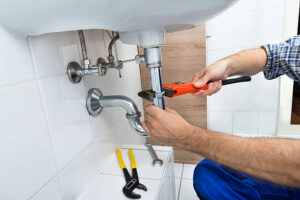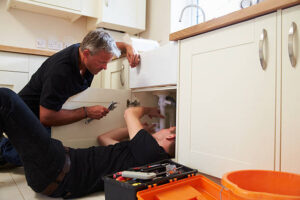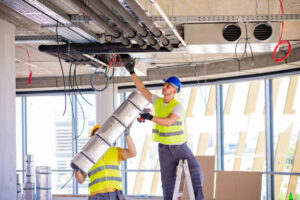Many homeowners are distressed over an unexpected water leak. Usually, a quick visit to a leak detection plumber brightens and relieves an otherwise dismal day. Field professionals are like detectives equipped with certain tools and extensive experience; they can locate a small leak that, if left undetectable, may create a major flood. Although years of practice and innate skill for difficult riddles make the difference, it may sound like magic.

Usually starting their work with a good view of the scene, most skilled plumbers pay close attention to sounds suggesting invisible water flow. A small trickle in peaceful surroundings can reveal a secret problem. They may use stethoscopes for pipes, a tool more suited for medical. Sometimes they even make use of infrared cameras. These thumbs-up tools help to detect temperature differences in walls or floors where water builds up. The devices act as stealth agents battling moisture issues.
Once the likely leak source is under investigated, even a minor junction or crack gets close inspection. Many times, plumbers build their game plan on extensive research. They could benefit from little pipe-traveling video cameras. It is like giving the plumbing a little space mission. Laughing, one plumber said these cameras were the “Sherlock of the pipe system”. Every trick and approach in their toolkit ensures nothing is wasted.
Among the tools and tests, the forms and sizes vary greatly. A few technologies blast sound waves through the walls. Should water be leaking, the echoes have strange resonance. It sounds almost like listening to a lecture in a crowded room. The plumber listens with an ear tuned to pick out even the tiniest whisper of water flow. Sometimes the operation reminds one of tuning a guitar. One missing note might destroy the entire song. Professionals know, though, the settings to modify for best reading.
Some plumbers prefer advanced sensing technologies. These small instruments cling to pipes and guide the user using a smartphone app. One could indicate a malfunction with a beep, buzz, or flashing light. Simplicity of these systems is beautiful. Once established, they carry out the challenging chore of always observing constant water flow. While not all homeowners incorporate such smart gadgets, in large homes and commercial buildings they can be quite beneficial.
Some leaks seem to hide behind walls or under ground. Finding these secret locations is like solving a difficult puzzle. One clever move plumbers use is a water pressure check. Water leaks from the pipe naturally reduces pressure. One discovers hints even in the most minute drop in pressure. These steps, along with careful observation, will rapidly point up trouble areas.
The method used by a plumber could vary based on the specific issue. For a leak in an exposed pipe, a sound test would be plenty. For hidden leaks, though, more investigation is needed. Beginning with the course of a suspected pipe, a plumber might then follow Their deliberate motions enable them to detect the flow and the failure point. Sometimes they help themselves with pipe schematics. These designs clearly depict every link, which helps to rule out functional sections.

The method calls for some sensible trial and error. One plumber recalled a case in which water leaked into a customer’s basement. First to look at were the usual suspects. After a battery of tests, the source surfaced from an unusual angle in the attic. Under these conditions, a little sealant failed over time allowing moisture to pass into the insulator. The professional tackled the problem combining technical competence with common sense. It reminds us that, left uncontrolled, even the smallest detail can do great damage.
Of course, fixing leaks calls for some accepted procedures. Stopping the water source will help to stop more damage by means of which the affected area is then cleaned and dried. The plumber then looks over the broken pipe closely. Sometimes soldering is needed; other times a new fitting might be a better choice. The key is strengthening the repairs. Most experts follow tried-and-true, time-tested repair methods. A well done fix can avoid later problems and unexpected water bills for homeowners.
Many professionals agree that preventive maintenance is really vital. Regular inspections let one find early leak signs before a disaster starts. One good tip is to routinely check around appliances and under sinks. Early discovery of simple leaks will help you save money. One client claimed that until it was found, a small leak from a kitchen sink slowly cost a lot in repairs. Early visits from a plumber could have changed that story. Regular maintenance for your plumbing system is like a change of oil. It preserves ideal running conditions for everything.
Some plumbers approach challenging work creatively. Dye testing help occasionally to identify hidden leaks. The pipes flow a vivid dye; your leak will show up where it shouldn’t. It’s like dropping food coloring into water to observe the circulation pattern. On stubborn leaks where silence is the only indication, this method works well. Once the leak is found, the plumber patches more seepage.
Not every leak fix is simple enough for a few of hours. Big leaks could call for several days of work. During this time, plumbers modify water schedules, assist building owners, and may even relocate occupants temporarily. It is a collaborative effort that guards important homes from more significant disasters. Freely flowing water could damage structures and destroy valuable objects. The age of the structure and the type of pipes used determine among several factors the complexity of these repairs. Leaks in older homes could reveal defects missed for decades. Rubber seals and hoses might thus be replaced even in circumstances of only one site needing repair.
One has to be in direct touch with clients. When describing what looks to be a catastrophic leak, some plumbers are honest even humorous. One technician related a damaged pipe to an irate dragon spouting water over a castle. Such tales not only help to lighten the circumstances but also help housekeepers to realize the gravity of neglecting regular checks. Here, comedy acts as a link between common knowledge and technical details. A funny story can help with long-timed tension even if you might not find comedy in a water leak.

Finding leaks is not one-time occurrence. Seasonal fluctuations tax the pipes, especially in hot summers and icy winters. Extreme temperatures cause pipes to both shrink and expand. Weak joints or cracks could at last result from this constant motion. Twice a year plumbing inspections ensure homes are ready for seasonal changes. Many others advocate using pressure regulators. These devices provide continuous water flow and prevent unplanned surges capable of breaking a pipe. A little preventive can save a lot of suffering and financial loss down road.
Plumbers operate under numerous different conditions. Some repairs are in tiny spots where even a penny might block the line. Others want many hours of total water shutdown. Every project brings challenges; two solutions are never exactly the same. A few repairs are finished on a wet day with a little of humor meant to brighten the mood. Sometimes professionals leave a kind letter for the homeowner to help to partially lighten the difficult repair procedure. It reminds everyone that a good laugh may achieve miracles even if pipes and water could be resistant.


